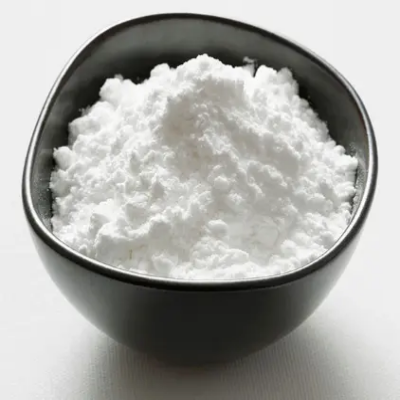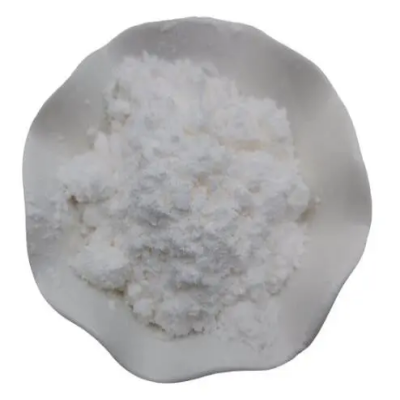-

Tiamulin fumarate CAS:55297-96-6
Tiamulin fumarate is a semisynthetic pleuromutilin antibiotic used in veterinary medicine to treat swine respiratory diseases and various bacterial infections in poultry. It inhibits bacterial protein synthesis by binding to the 50S ribosomal subunit, exerting bacteriostatic effects against specific gram-positive and mycoplasma organisms. Tiamulin fumarate is well absorbed orally and has good tissue distribution, making it effective for systemic infections in food-producing animals.
-

Thiabendazole CAS:148-79-8
Thiabendazole is an antiparasitic medication belonging to the benzimidazole class, effective against a variety of parasitic infections. It works by disrupting the microtubule function in the parasites, leading to inhibition of their growth and reproduction. Thiabendazole is commonly used in both veterinary and human medicine for the treatment of parasitic infections caused by nematodes, cestodes, and trematodes.
-

Tetracycline CAS:60-54-8
Tetracycline is a broad-spectrum antibiotic belonging to the tetracycline class, derived from the natural compound chlortetracycline. It inhibits bacterial protein synthesis by binding to the bacterial ribosome, thereby preventing the attachment of aminoacyl-tRNA to the mRNA-ribosome complex. This mechanism of action leads to bacteriostatic effects against a wide range of gram-positive and gram-negative bacteria, as well as certain protozoa.
-

Teicoplanin CAS:61036-62-2
Teicoplanin is a glycopeptide antibiotic derived from Actinoplanes teichomyceticus, effective against various gram-positive bacteria including methicillin-resistant Staphylococcus aureus (MRSA). It inhibits bacterial cell wall synthesis by binding to the D-alanyl-D-alanine terminus of peptidoglycan precursors, leading to cell lysis and bactericidal effects. Teicoplanin is often used in clinical settings for treating severe infections caused by gram-positive organisms.
-

Sulfisoxazol (4-amino-N-(3,4-dimethyl-5-isoxazolyl)benzenesulfonamide) CAS:127-69-5
Sulfisoxazole, also known as sulfafurazole, is a sulfonamide antibiotic belonging to the sulfa drug class. Chemically described as 4-amino-N-(3,4-dimethyl-5-isoxazolyl)benzenesulfonamide, sulfisoxazole inhibits bacterial growth by interfering with the synthesis of folic acid. This mechanism of action targets dihydropteroate synthase, an enzyme essential for bacterial folate production, thereby impeding their growth and proliferation.
-

Sulfapyridine CAS:144-83-2
Sulfapyridine is a sulfonamide antibiotic that was historically used in the treatment of bacterial infections, particularly during World War II. It belongs to the class of sulfa drugs, which inhibit bacterial growth by interfering with the synthesis of folic acid. Sulfapyridine exerts its bacteriostatic effects by targeting dihydropteroate synthase, an enzyme essential for folate production in bacteria.
-

Tazobactam CAS:89786-04-9
Tazobactam is a beta-lactamase inhibitor that enhances the activity of beta-lactam antibiotics by protecting them from degradation by beta-lactamase enzymes produced by many resistant bacteria. It is commonly used in combination with beta-lactam antibiotics such as piperacillin to broaden their spectrum of activity against a variety of bacterial infections. Tazobactam effectively restores the efficacy of beta-lactam antibiotics against beta-lactamase-producing bacteria, particularly gram-negative organisms.
-

Tigecycline CAS:220620-09-7
Tigecycline is a broad-spectrum glycylcycline antibiotic that inhibits bacterial protein synthesis by binding to the 30S ribosomal subunit, thereby exerting bacteriostatic effects against a wide range of gram-positive and gram-negative bacteria, including multidrug-resistant pathogens. It is structurally related to tetracyclines but possesses enhanced activity against resistant strains due to its unique mechanism of action and structural modifications.
-

Sulbactam sodium salt CAS:69388-84-7
Sulbactam sodium salt is a beta-lactamase inhibitor that is commonly used in combination with certain antibiotics to combat bacterial infections. It acts by inhibiting the activity of beta-lactamase enzymes produced by bacteria, which can render antibiotics ineffective. By preventing the degradation of antibiotics such as penicillins and cephalosporins, sulbactam sodium salt helps to enhance their antibacterial properties. This compound is often utilized in conjunction with antibiotics like ampicillin to create synergistic effects against a wide range of susceptible bacterial strains.
-

Sulfadimidine CAS:57-68-1
Sulfadimidine, also known as sulfamethazine, is a sulfonamide antibiotic used in the treatment of bacterial infections. It belongs to the class of antimicrobials known as sulfa drugs, which work by inhibiting bacterial growth and replication. Sulfadimidine interferes with the synthesis of folic acid in bacteria, a crucial component for their survival, leading to bacteriostatic effects against a wide range of gram-positive and gram-negative bacteria.
-

Sulfacetamide sodium salt CAS:6209-17-2
Sulfacetamide sodium salt is a water-soluble derivative of sulfacetamide, a sulfonamide antibiotic commonly used in topical formulations for the treatment of bacterial infections of the skin and eyes. This salt form enhances the solubility and stability of sulfacetamide, making it suitable for various pharmaceutical applications. Sulfacetamide sodium salt works by inhibiting the growth of bacteria, particularly those responsible for conditions such as acne vulgaris, seborrheic dermatitis, and ocular infections like conjunctivitis. It interferes with bacterial folate synthesis, effectively targeting a broad spectrum of gram-positive and gram-negative bacteria.
-

Streptomycin sulfate CAS:3810-74-0
Streptomycin sulfate is an antibiotic medication belonging to the aminoglycoside class. It is derived from the bacterium Streptomyces griseus and is commonly used to treat bacterial infections. Streptomycin sulfate works by inhibiting bacterial protein synthesis, thereby effectively killing susceptible bacteria. It is often prescribed for the treatment of tuberculosis, plague, tularemia, and certain other infections caused by susceptible bacteria. Streptomycin sulfate is typically available in injectable form and is administered either intramuscularly or intravenously under medical supervision.

